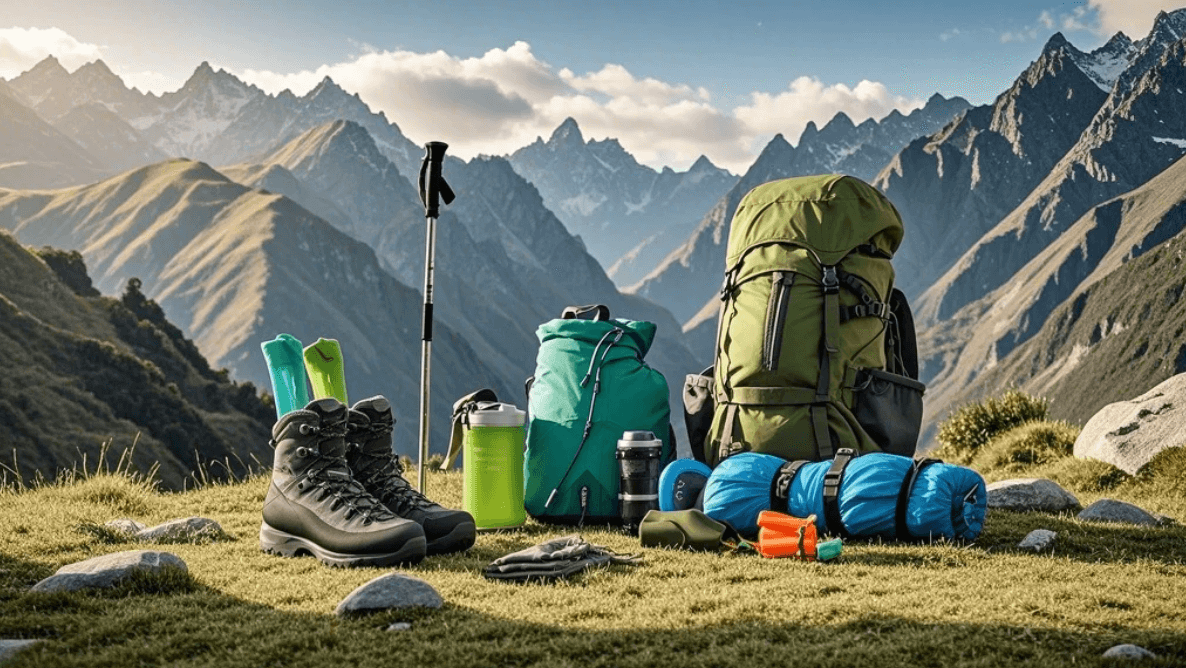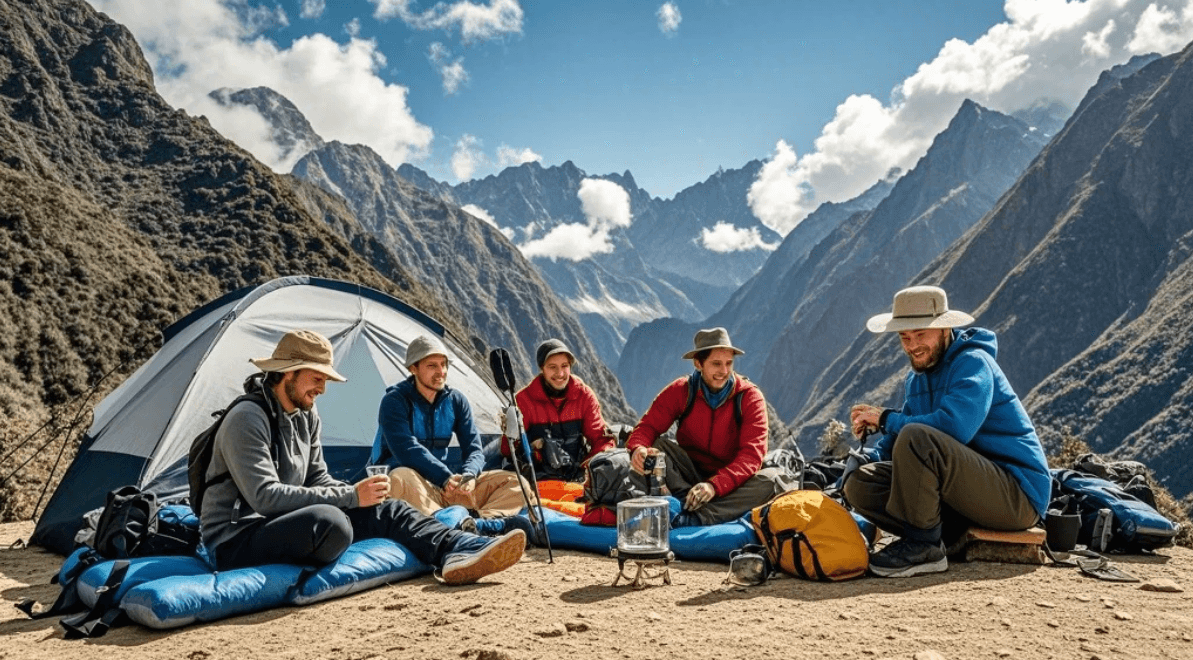Best Hiking Gear for the Inca Trail to Machu Picchu
| The Inca Trail to Machu Picchu is one of the most iconic and rewarding hikes in the world. This ancient pathway winds through the Andes Mountains, offering breathtaking views, diverse ecosystems, and a glimpse into the history of the Inca civilization. However, the trek is also physically demanding, with high altitudes, steep climbs, and unpredictable weather. To ensure a safe and enjoyable experience, it’s essential to pack the right gear. In this guide, we’ll walk you through the best hiking gear for the Inca Trail, from footwear to camping essentials, and provide tips for preparing for this unforgettable adventure. Why Proper Gear Matters on the Inca Trail The Inca Trail is a challenging hike that spans approximately 26 miles (42 kilometers) over four days. The trail reaches altitudes of over 13,800 feet (4,200 meters), and the weather can change rapidly, from sunny and warm to cold and rainy. Proper gear is crucial to protect against the elements, ensure comfort, and prevent injuries. Additionally, since you’ll be carrying your own gear or relying on porters, it’s important to pack smart and keep your load as light as possible.  Essential Hiking Gear for the Inca Trail Here’s a comprehensive list of the best hiking gear for the Inca Trail, categorized by functionality: 1. Footwear Your footwear is arguably the most important piece of gear for the Inca Trail. The terrain is uneven, rocky, and often slippery, so you’ll need sturdy, comfortable shoes. Hiking Boots: Choose waterproof, high-ankle hiking boots with excellent grip and ankle support. Break them in well before your trip to avoid blisters. Hiking Socks: Pack moisture-wicking, cushioned socks to keep your feet dry and comfortable. Bring at least three pairs. Sandals or Camp Shoes: Lightweight sandals or camp shoes are great for relaxing at camp after a long day of hiking. 2. Clothing Layering is key for the Inca Trail, as temperatures can vary significantly throughout the day. Base Layers: Moisture-wicking, quick-drying shirts and leggings to keep you dry and comfortable. Insulating Layers: A fleece or down jacket for warmth during cold mornings and evenings. Outer Layers: A waterproof and windproof jacket and pants to protect against rain and wind. Hiking Pants: Lightweight, quick-drying pants that can be converted into shorts are ideal. Hat and Gloves: A wide-brimmed hat for sun protection and lightweight gloves for chilly mornings. Buff or Neck Gaiter: Useful for sun protection, warmth, or as a sweatband. 3. Backpack Your backpack will carry all your essentials, so choose one that’s comfortable and the right size for your needs. Daypack: A 20-30 liter daypack is sufficient if you’re using porters to carry your main gear. Larger Backpack: A 40-50 liter backpack if you’re carrying all your own gear. Rain Cover: A waterproof cover to protect your backpack during rain. 4. Sleeping Gear Comfortable sleep is essential for recovering after long days of hiking. Sleeping Bag: A lightweight, compact sleeping bag rated for cold temperatures (around 20°F/-6°C). Sleeping Pad: An inflatable or foam pad for insulation and comfort. Pillow: A compact, inflatable pillow or use a stuff sack with clothes. 5. Hydration and Nutrition Staying hydrated and fueled is crucial for maintaining energy levels. Water Bottles or Hydration Bladder: Carry at least 2 liters of water. A hydration bladder is convenient for drinking on the go. Water Purification: Water purification tablets, a filter, or a SteriPen to treat water from streams. Snacks: High-energy snacks like nuts, dried fruit, energy bars, and chocolate. 6. Navigation and Safety While the Inca Trail is well-marked, it’s important to be prepared for emergencies. Map and Compass: Even if you’re with a guide, it’s good to have a map and compass as backup. First Aid Kit: A compact kit with bandages, blister treatment, pain relievers, and any personal medications. Headlamp: A lightweight headlamp with extra batteries for nighttime use. Whistle: For emergency signaling. 7. Personal Items Don’t forget the essentials for hygiene and comfort.  Toiletries: Biodegradable soap, toothbrush, toothpaste, and toilet paper. Sunscreen and Lip Balm: High-SPF sunscreen and lip balm with SPF to protect against the strong Andean sun. Insect Repellent: Especially useful in the lower-altitude sections of the trail. Quick-Dry Towel: Lightweight and compact for drying off after washing. 8. Optional but Helpful Items These items can enhance your comfort and experience on the trail. Trekking Poles: Helpful for stability and reducing strain on your knees, especially during steep descents. Camera: Capture the stunning scenery and memories of your journey. Notebook and Pen: For journaling or sketching your experiences. Power Bank: To keep your devices charged, especially if you’re using your phone for photos or navigation. Tips for Packing and Preparing Pack Light: Only bring what you truly need. Aim for a pack weight of no more than 20-25 pounds (9-11 kilograms) if you’re carrying your own gear. Test Your Gear: Before your trip, test all your gear, especially your boots, backpack, and sleeping bag, to ensure they’re comfortable and functional. Acclimatize to Altitude: Spend a few days in Cusco or another high-altitude location before starting the trek to reduce the risk of altitude sickness. Stay Organized: Use packing cubes or stuff sacks to keep your gear organized and easily accessible. Respect the Environment: Follow Leave No Trace principles by packing out all trash and minimizing your impact on the trail. Conclusion The Inca Trail to Machu Picchu is a once-in-a-lifetime adventure that requires careful preparation and the right gear. By investing in quality equipment and packing smart, you’ll be well-equipped to tackle the challenges of the trail and fully enjoy its rewards. From sturdy boots to a reliable sleeping bag, every piece of gear plays a role in ensuring your comfort, safety, and enjoyment. So, gear up, lace up your boots, and get ready for an unforgettable journey through the Andes. |
wendy
|
2025.03.21




